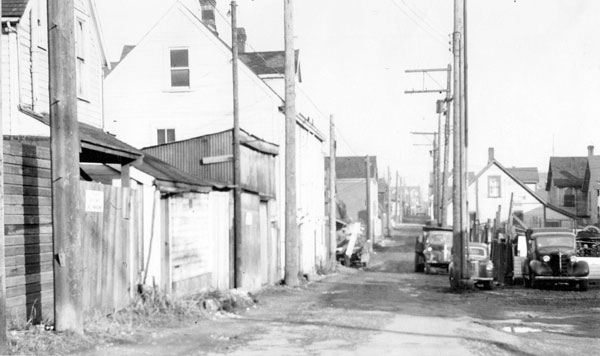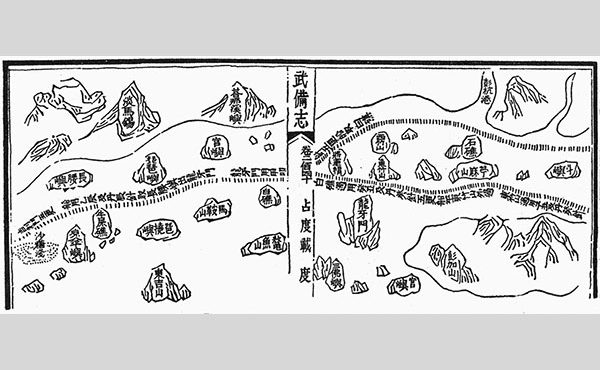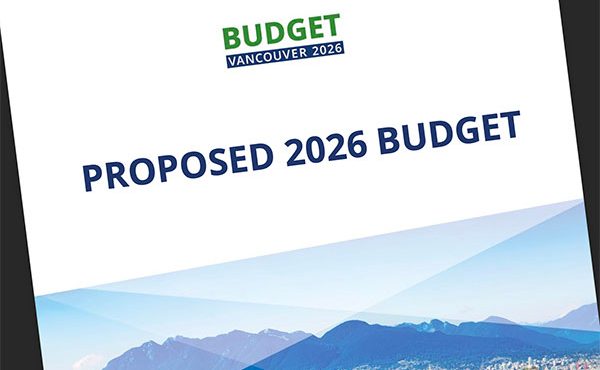
The first part of this series ended with the introduction of Vancouver Transportation Study (VTS), a report that included the destruction of the Strathcona area and Hogan’s Alley, in the name of freeway construction and urban renewal. Looking at what resulted, the VTS was proposed to the City Council in 1967 during a public hearing, and although initially approved by the Council, it was unsurprisingly met with a strong opposition by the public. The city held another public hearing a month later, and this time the community of Strathcona, Chinatown and Hogan’s Alley had Chinese organizations, businesses’ and high profile non-Chinese organizations from the area issue formal complaints.
A crucial alliance between the Chinese community and local academics at the University of British Columbia was formed when the destruction of Chinatown, Hogan’s Alley and the Strathcona neighbourhood became public. This alliance consisted of academics from the School of Planning, Political Science, Geography and Architecture, and who came together to support the community and oppose the decision from the Vancouver Council (Pendakur, 61).
Highlighting the ignorance of the City, the academics provided facts and data to the Chinatown community in order to expose the fact that their community was not ‘inefficient’ or a ‘slum’, but an area of great economic profitability. The scholars found that the city officials limited the scope of work for the consultants which conflicted with their independent research and swayed the decision of the council to only one option: to completely clear the existing neighbourhood and develop the “Chinatown Freeway” (Pendakur, 62).
This type of trickery by the government officials was common in Canada, at this time. Racially motivated urban renewal projects were popular for the Canadian government, most notably was the removal of a black community in the Halifax, Nova Scotia. This black community in Halifax—known as ‘Africville’, just west of the Halifax Harbour and facing the Bedford Basin—was highly desired by the government due to the value and location of its real estate.
The government knew that the Africville had little to no financial backing, no knowledge of real estate value, or the social infrastructure to support any uprising or protest (Clairmont, 136). This was much different than Vancouver’s Chinatown, where the Chinese business owners had the financial backing, support from academics and the knowledge of the real estate market to organize a protest and appeal to the provincial and federal governments.
Unfortunately, for the people of Hogan’s Alley, this uprising by the community only focused on the destruction or “renewal” of “Chinatown”. The Council recognized the complaints of the community and agreed not to destroy the Chinatown area to develop a freeway, accordingly. Noting that the study would be used for data purposes only (Pendakur, 35). This was fantastic news for the people of Chinatown, and Strathcona, but it failed to respond to issues surrounding the Georgia Viaduct reconstruction project and the fate of Hogan’s Alley.
For the residents of Hogan’s Alley, who had little to no community organization, or city planning knowledge, to fight the city to stop another project without similar backing as Chinatown, seemed futile. For governmental officials and city planners, urban renewal was all the craze during the 1950’s and 1960’s, and as described by Mike Harcourt and Ken Cameron, “Urban Renewal and freeways were all the rage in the immediate postwar climate; after defeating Hitler, Western civilizations thought it could do just about anything.
“Urban Renewal” was the postwar expression of a North American social movement that dated back to the Edwardian ear, nurturing the ambitions of pioneering city planners to provide every citizen with secure, weatherproof housing.
At the same time, the continent-wide City Beautiful movement was based on the belief that inspirational urban design could uplift city dwellers, especially in the case of what it considered moral decline due to poverty.” (Harcourt and Cameron 34). This definition helps understand the thought process and the beliefs held by the city planners and city officials as they decided the future of Strathcona.
Furthermore, an interesting tactic was used by the government to freeze the prices of houses years prior, in the Starthcona area, as a means of acquiring them for a less than market price (Harcourt and Cameron, 35). This was very reminiscent of the Africville situation, where the government would offer the residences who had proof of title, five hundred dollars for their property; with complete understanding that their knowledge of the true real estate value was limited.
Now, as the city of Vancouver agreed to leave Chinatown alone, and the focus on the urban renewal project seemed to fall off the radar for the media, Hogan’s Alley was still on sight for the city planners – and no one in the community seemed to care, or notice.
**
Curtis Scott is undergraduate at Concordia University with a specialized degree in urban planning. His passions lie in real estate, economics, policy design, and regional & community planning. Curtis is also an avid fan of the works by Roy Henry Vickers and enjoys visiting Tofino, BC to view his gallery, as well as surf!
*
Bibliography
- Anderson, Kay. Vancouver’s Chinatown – Racial Discourse in Canada 1875-1980. Montreal: McGill-Queen’s University Press, 1991. Print.
- Clairmont, Donald. Africville: the life and death of a Canadian black community. Toronto: Canadian Scholars’ Press, 1999. Print.
- Compton, Wayde. “Hogan’s Alley and Retro-speculative Verse”. West Coast Line; Fall 2005; 39, 2; CBCA Reference and Current Events. Page 109-115. Print.
- Davis, Chuck. “The Black Community of Strathcona and Hogan’s Alley in Vancouver”. Vancouver Historical Society Febraury (2008). Page 1. Print.
- Francis, Daniel. “The secret life of a public man”. The Beaver; April 2003; CBCA Reference and Current Events. Print.
- Harcourt, Micheal., Cameron, Ken.,Rossiter, S. City Making in Paradise. Vancouver.:D&M Publishers, 2007. Print
- Jacobs, Jane. The Death and Life of Great American Cities. New York: Vintage Books. Page 3-25, 1961. Print.
- Macionis,J., Parrillo,V. Cities and Urban Life: Fifth Edition. New Jersey:Prentice Hall, 2010. Print.
- Pednakur, V.Setty. Cities, Citizens & Freeways. Vancouver: S.N, 1972. Print
- Plant, Byron. “Vancouver Downtown Eastside Redevelopment Planning”. Legislative Library of British Columbia V.4 (2008). Page 1-13. Print.




